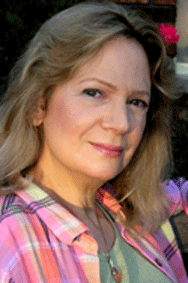As a public service to authors, I’m making my annual pilgrimage to the choppy waters of self-publishing. What leads me back to this topic is the confluence of book industry news, NaNoWriMo and current TV commercials that demonstrate the pull and the pitfalls facing aspiring authors.
The industry news is that self-published books continue to hit record numbers, year over year. Bowker, the company that issues and tracks ISBNs, reported that 786,935 ISBNS were issued to self-published authors in 2016, an 8.2% increase over the previous year – and a remarkable 218% increased since 2011. In 2016, nearly 75% of those books were print, an increase of 11.3%; 25% were ebooks, a decline of 3.2%. It should be noted that eBooks published through Amazon’s KDP (Kindle Direct Program) are excluded from Bowker’s stats because Amazon issues ASIN (not standard ISBN) numbers.
So, the pendulum continues to swing in the direction of self-published books.
National Novel Writing Month (NaNoWriMo) begins its 18th year on November 1st (they encourage earlier online registration). Since 1999, NaNoWriMo has inspired millions of aspiring authors to attempt to write a 50,000-word novel in 30 days. The free program, providing guidance and support to writers, drew more than 430,000 finished manuscripts in 2015 alone. Over the life of the program, it reports that 250 of its participants have seen their manuscripts sell to traditional publishing houses. Presumably, many more manuscripts went on to be self-published.
It’s the self-publishing part of my 3-piece post where I shout from the roof-top: CAVEAT EMPTOR! If you’ve followed my blog over the past 5 years, you know I view self-publishing as an excellent option for authors … if they understand what it entails and are prepared to do all that it takes to be successful.
If your manuscript is your brainchild, don’t you want to protect and nurture it through its gestation, birth and life? Because you love your brainchild and are eager to give it a meaningful life, you may be susceptible to commercial promises and glitzy websites that sell snake oil in the guise of dreams.
A current TV commercial promises they’ll do everything for you and guarantee your book will be placed in bookstores. BEWARE: No brick and mortar bookstore guarantees it will accept a book, even from traditional publishers; many won’t even consider self-published books.
You get what you pay for isn’t a given with many of these companies; you will be squeezed out of your money only to end up with a garage full of books collecting dust. And just because your self-published book may be offered through Amazon doesn’t mean anyone will notice or buy it.
You wouldn’t hire someone to care for your child without doing due diligence about their experience, qualifications and costs. You would decide in advance how much control you want to retain over decisions affecting your child. You would ask experienced parents for referrals and if you didn’t already know other successful parents, you would seek out reputable parent networking groups.
You can’t re-birth a child and it’s almost equally impossible to successfully re-publish a failed book. So study the territory before you go forward. The path to that great reward at the other end is fraught with landmines. My Book.ed blog post of February 25, 2013, The Good, the Bad and the Ugly About Self-Publishing is a good starting point.
Love what you do and do what you love. Don’t listen to anyone else who tells you not to do it. You do what you want, what you love. Imagination should be the center of your life. — Ray Bradbury.

